Abstract
The molecular requirements for ethylene action were investigated using the pea straight growth test. Biological activity requires an unsaturated bond adjacent to a terminal carbon atom, is inversely related to molecular size, and is decreased by substitutions which lower the electron density in the unsaturated position. Evidence is presented that ethylene binds to a metal containing receptor site. CO2 is a competitive inhibitor of ethylene action, and prevents high concentrations of auxin (which stimulate ethylene formation) from retarding the elongation of etiolated pea stem sections. It is suggested that CO2 delays fruit ripening by displacing the ripening hormone, ethylene, from its receptor site. Binding of ethylene to the receptor site is also impeded when the O2 concentration is lowered, and this may explain why fruit ripening is delayed at low O2 tensions.
Full text
PDF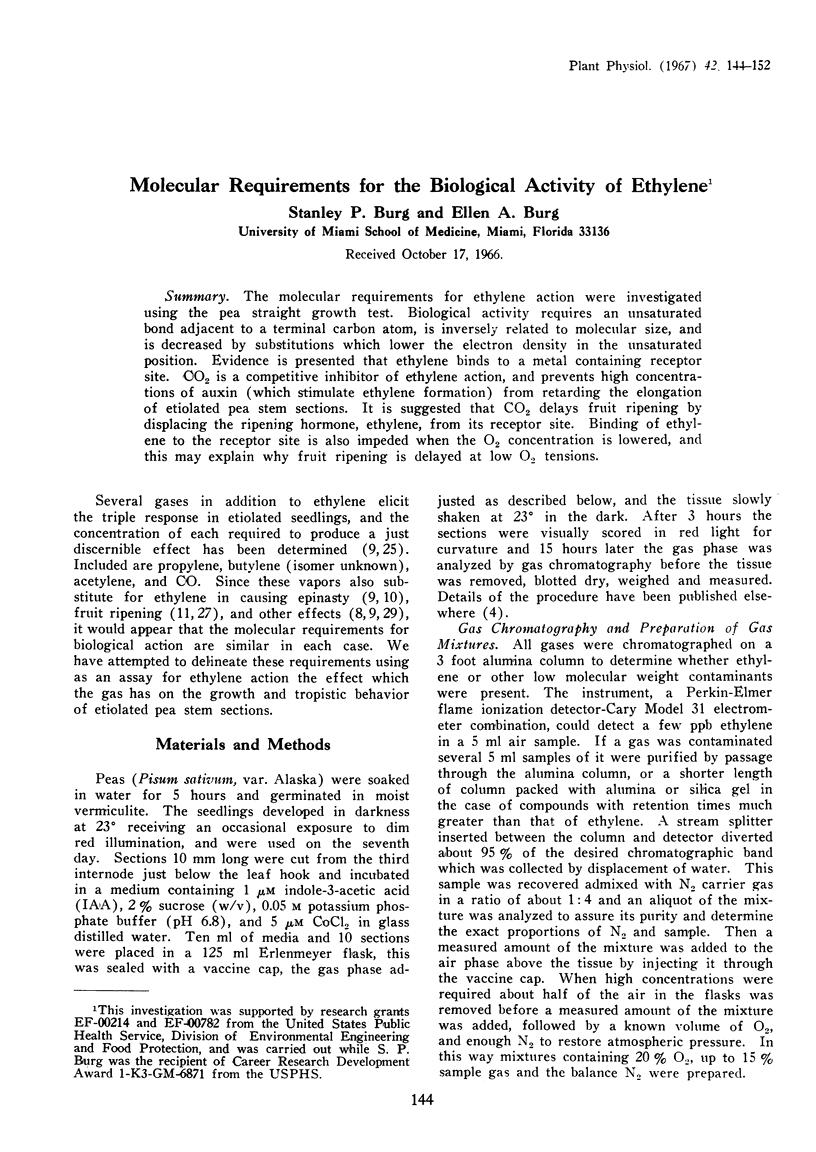
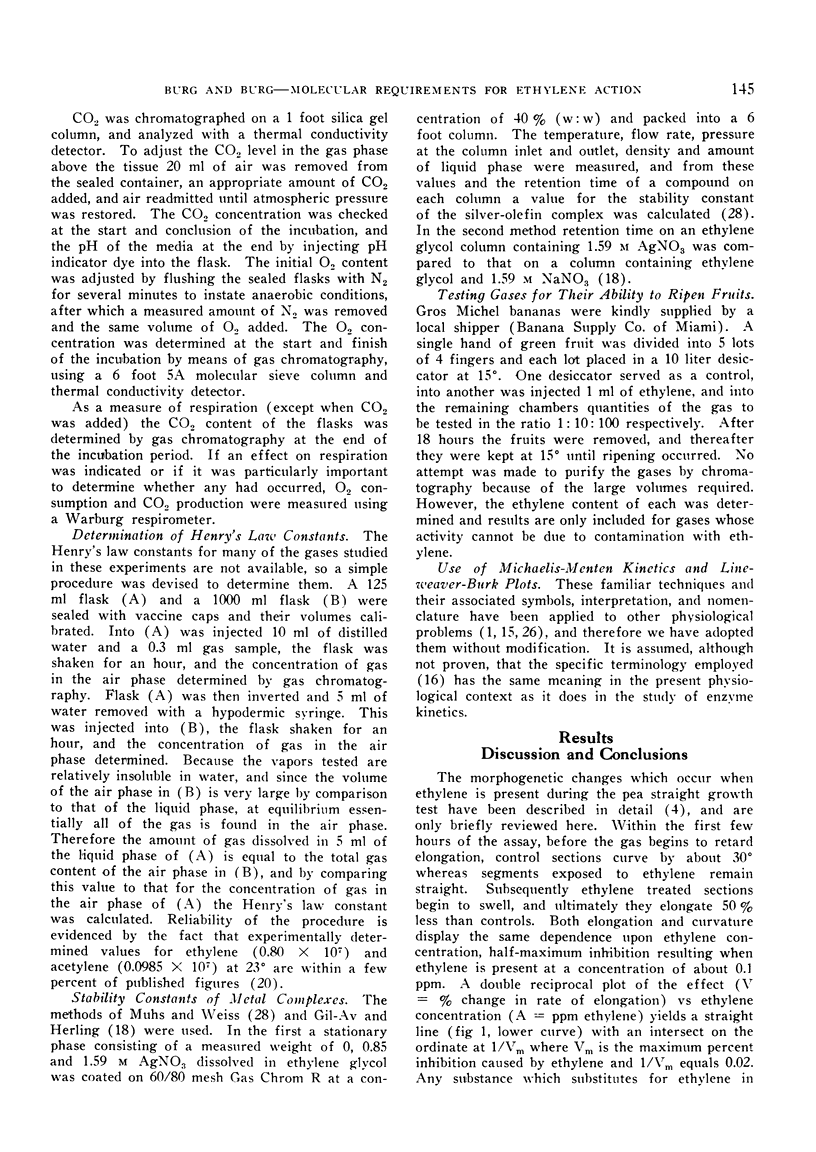

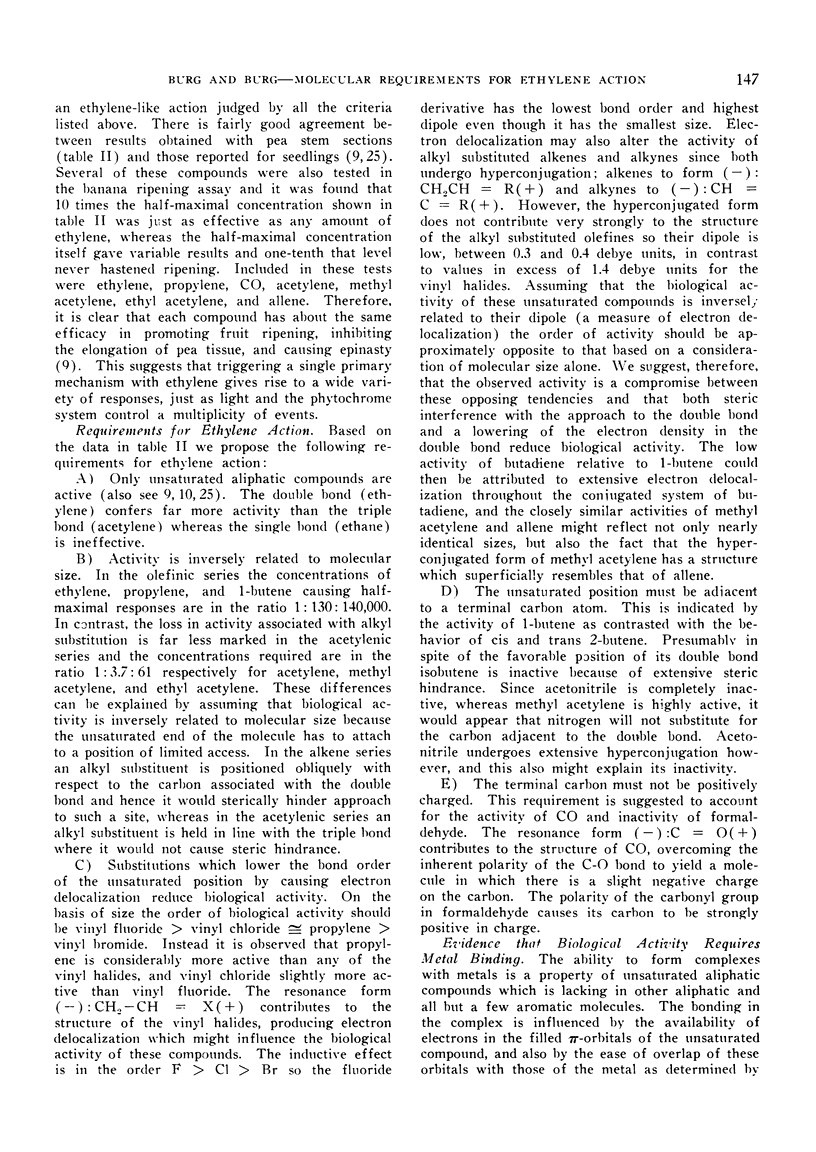
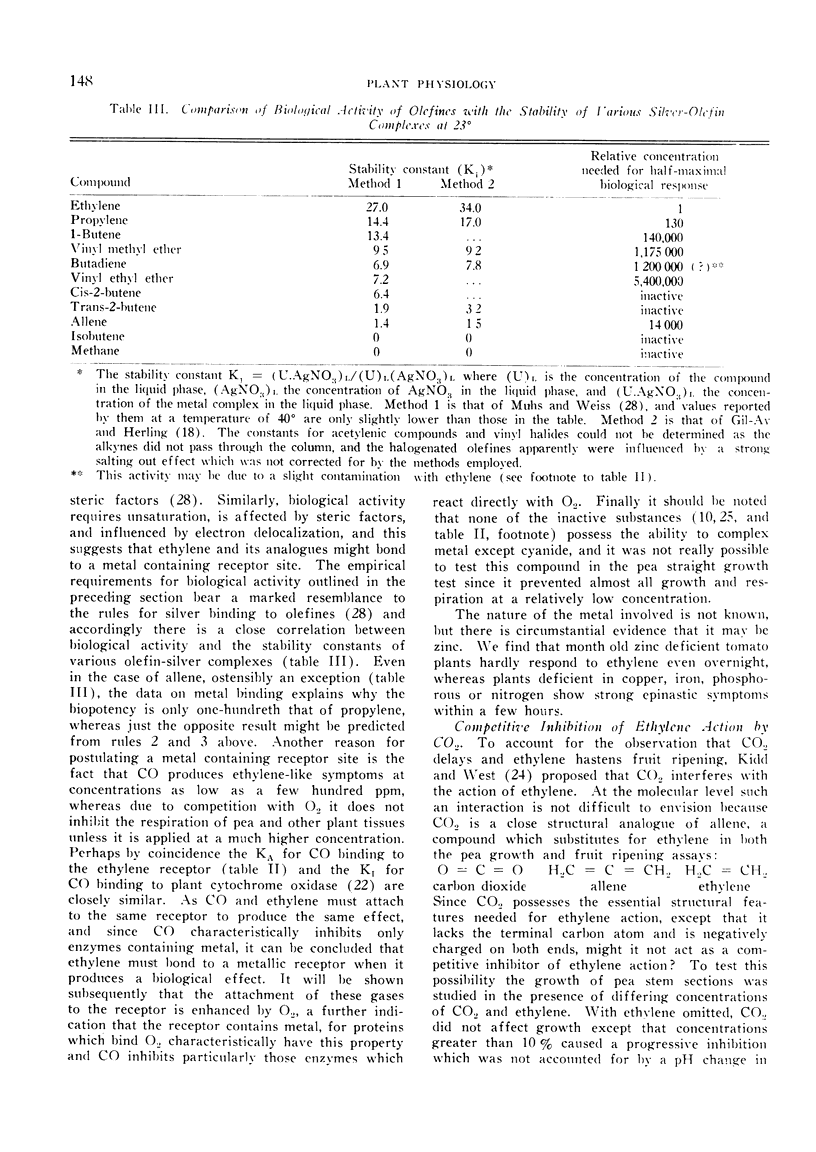
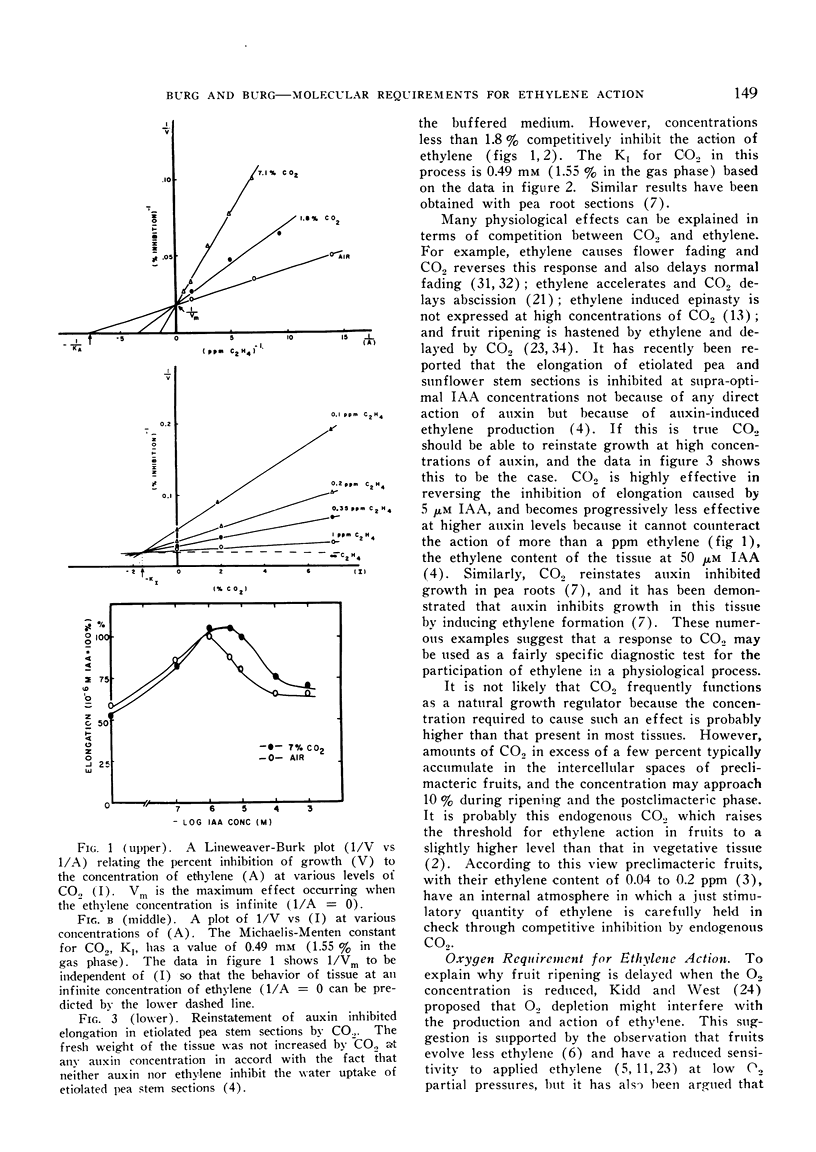
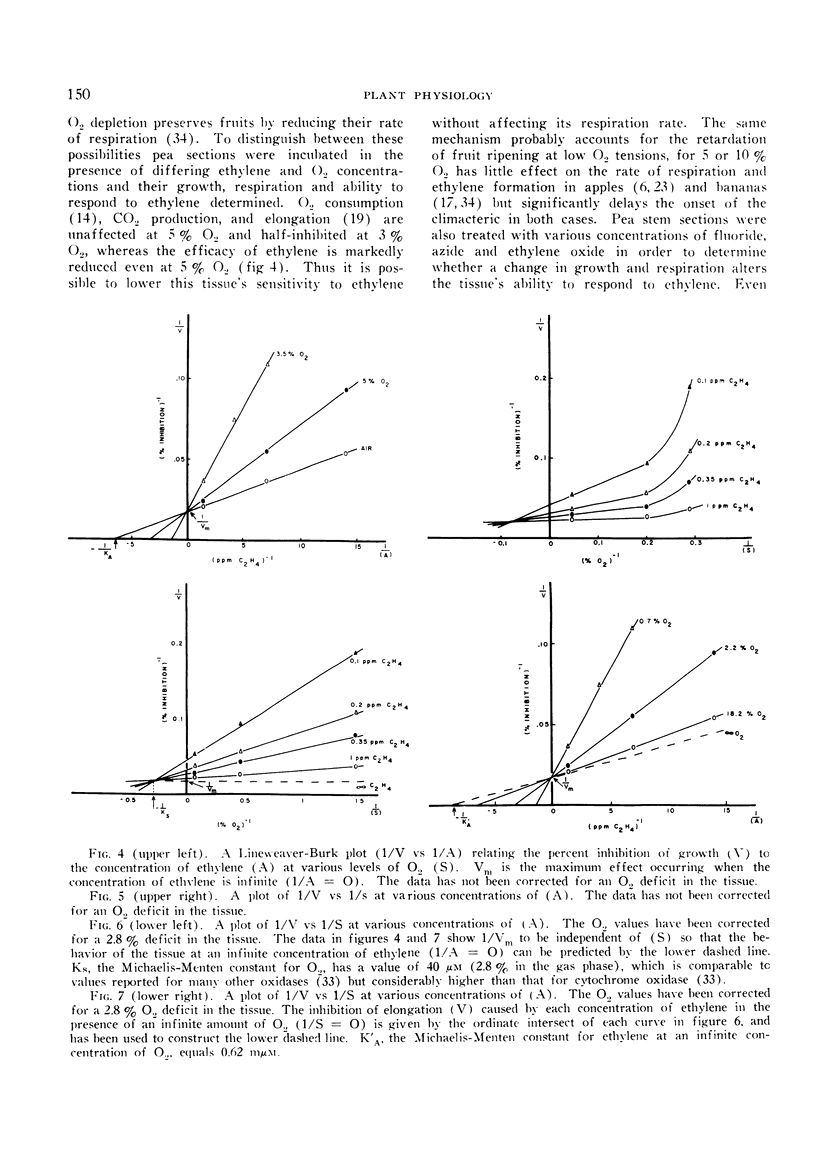
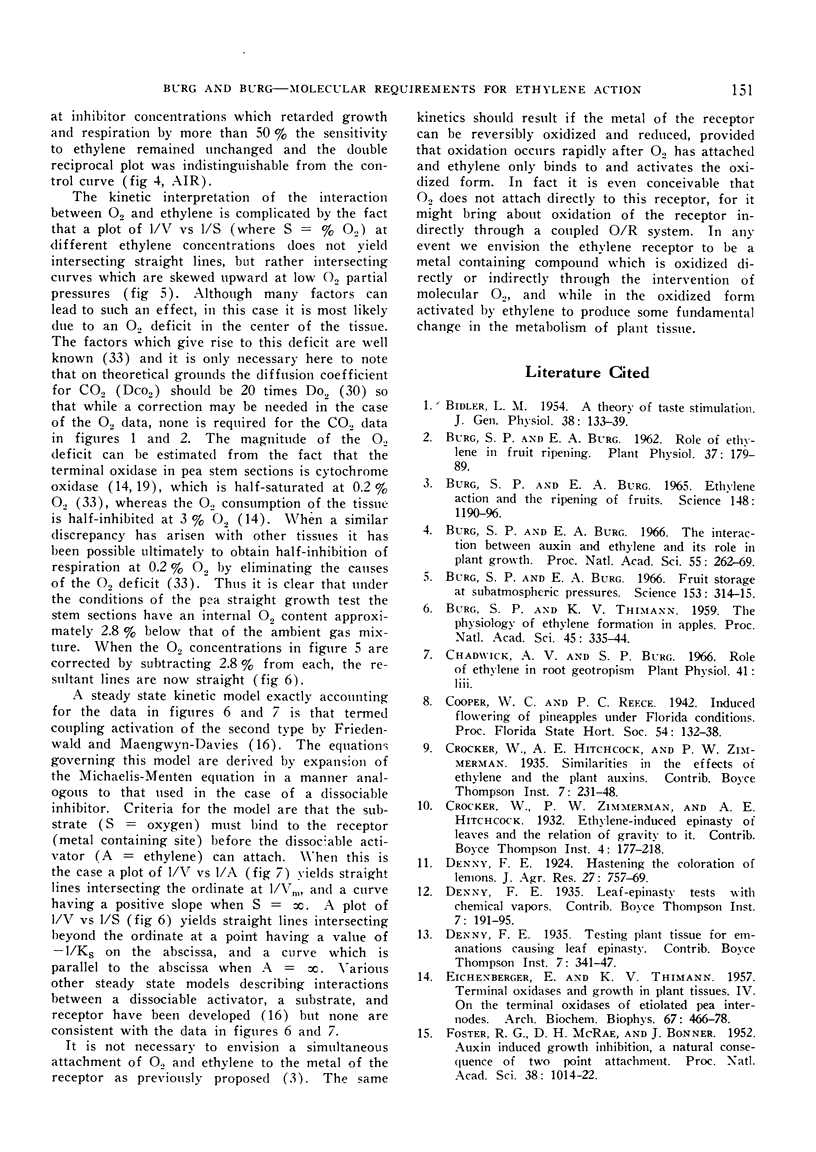
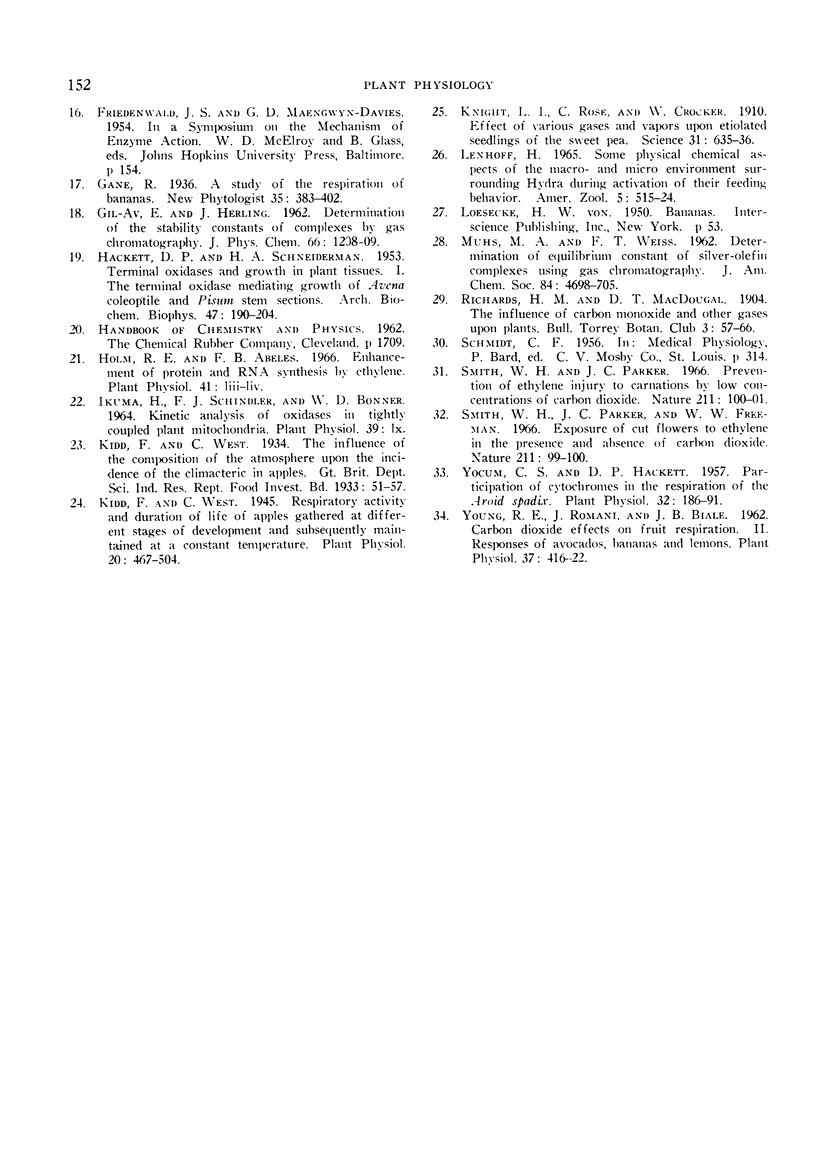
Selected References
These references are in PubMed. This may not be the complete list of references from this article.
- BURG S. P., BURG E. A. ETHYLENE ACTION AND THE RIPENING OF FRUITS. Science. 1965 May 28;148(3674):1190–1196. doi: 10.1126/science.148.3674.1190. [DOI] [PubMed] [Google Scholar]
- Burg S. P., Burg E. A. Fruit storage at subatmospheric pressures. Science. 1966 Jul 15;153(3733):314–315. doi: 10.1126/science.153.3733.314. [DOI] [PubMed] [Google Scholar]
- Burg S. P., Burg E. A. Role of Ethylene in Fruit Ripening. Plant Physiol. 1962 Mar;37(2):179–189. doi: 10.1104/pp.37.2.179. [DOI] [PMC free article] [PubMed] [Google Scholar]
- Burg S. P., Burg E. A. The interaction between auxin and ethylene and its role in plant growth. Proc Natl Acad Sci U S A. 1966 Feb;55(2):262–269. doi: 10.1073/pnas.55.2.262. [DOI] [PMC free article] [PubMed] [Google Scholar]
- Burg S. P., Thimann K. V. THE PHYSIOLOGY OF ETHYLENE FORMATION IN APPLES. Proc Natl Acad Sci U S A. 1959 Mar;45(3):335–344. doi: 10.1073/pnas.45.3.335. [DOI] [PMC free article] [PubMed] [Google Scholar]
- EICHENBERGER E., THIMANN K. V. Terminal oxidases and growth in plant tissues. IV. On the terminal oxidases of etiolated pea internodes. Arch Biochem Biophys. 1957 Apr;67(2):466–478. doi: 10.1016/0003-9861(57)90301-6. [DOI] [PubMed] [Google Scholar]
- Foster R. J., McRae D. H., Bonner J. Auxin-Induced Growth Inhibition a Natural Consequence of Two-Point Attachment. Proc Natl Acad Sci U S A. 1952 Dec;38(12):1014–1022. doi: 10.1073/pnas.38.12.1014. [DOI] [PMC free article] [PubMed] [Google Scholar]
- HACKETT D. P., SCHNEIDERMAN H. A. Terminal oxidases and growth in plant tissues. I. The terminal oxidase mediating growth of Avena coleoptile and Pisum stem sections. Arch Biochem Biophys. 1953 Nov;47(1):190–204. doi: 10.1016/0003-9861(53)90448-2. [DOI] [PubMed] [Google Scholar]
- Karlander E. P., Krauss R. W. Responses of Heterotrophic Cultures of Chlorella vulgaris Beyerinck to Darkness and Light. I. Pigment and pH Changes. Plant Physiol. 1966 Jan;41(1):1–6. doi: 10.1104/pp.41.1.1. [DOI] [PMC free article] [PubMed] [Google Scholar]
- Kidd F., West C. RESPIRATORY ACTIVITY AND DURATION OF LIFE OF APPLES GATHERED AT DIFFERENT STAGES OF DEVELOPMENT AND SUBSEQUENTLY MAINTAINED AT A CONSTANT TEMPERATURE. Plant Physiol. 1945 Oct;20(4):467–504. doi: 10.1104/pp.20.4.467. [DOI] [PMC free article] [PubMed] [Google Scholar]
- Yocum C. S., Hackett D. P. Participation of Cytochromes in the Respiration of the Aroid Spadix. Plant Physiol. 1957 May;32(3):186–191. doi: 10.1104/pp.32.3.186. [DOI] [PMC free article] [PubMed] [Google Scholar]
- Young R. E., Romani R. J., Biale J. B. Carbon Dioxide Effects on Fruit Respiration . II. Response of Avocados, Bananas, & Lemons. Plant Physiol. 1962 May;37(3):416–422. doi: 10.1104/pp.37.3.416. [DOI] [PMC free article] [PubMed] [Google Scholar]


